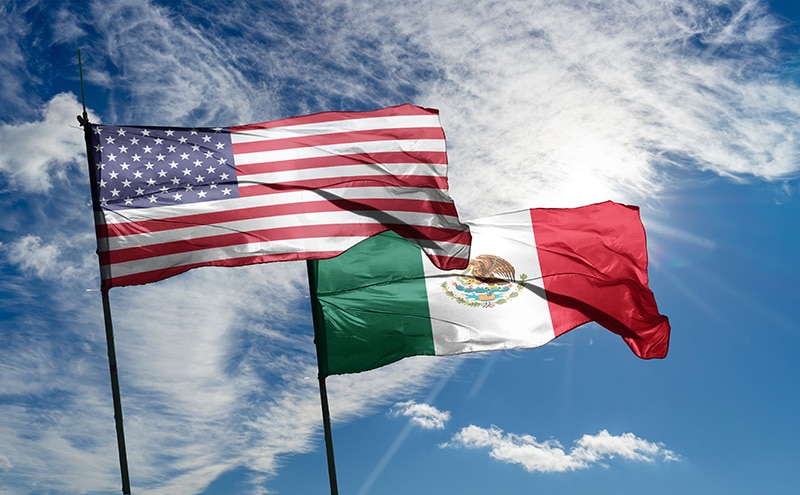
Capacity crunches have different causes. Shippers can prepare their business to overcome a tight market using 3PLs.

Capacity crunches have different causes. Shippers can prepare their business to overcome a tight market using 3PLs.
The transportation industry has faced an extraordinary capacity crunch in the last year and a half. While supply chain disruptions and lagging capacity continue to support increasing volumes, our most significant obstacle for a capacity recovery continues to be the truck production slowdown caused by the semiconductor shortage and driver shortage.
A shipping capacity crunch arises when the demand for truck space and lane fulfillment can’t be met. This impacts your business with inconsistent rates, uncertainty of available equipment, fulfillment strategy, and more importantly the customer experience.
Peak Seasons: Seasons with a high demand for certain goods happen all over the year. Holidays such as Christmas or New Year’s Eve increase the demand and leave the market with less available capacity. The demand for certain goods such as perishables also means a demand of a specific type of freight equipment, like refrigerated trucks to maintain the cold chain. Undoubtably continuous supply chain disruptions paired with rising consumer demands will make for a particularly difficult peak season.
Labor Shortages: In the face of a tight labor market, our shippers are directly affected by the rising cost of truckload capacity – ultimately affecting their profit and growth as a company. Labor shortages weave throughout the supply chain industry in every way, affecting drivers, warehouse workers, sales representatives, and so on. The decrease in staffing results in less freight production, organically resulting in increased shipping cost.
Natural Disaster: An uncontrollable variable in the supply chain world. Storms, earthquakes, or tsunamis – when a natural disaster strikes, it has a direct effect on multiple aspects of your business. Our economy relies on the transportation of goods and materials to connect suppliers with manufacturers, manufacturers with retailers, and retailers with consumers. In such case as a natural disaster, emergency care is prioritized, which means tightening capacity in the overall market.
Unexpected Events: Since COVID-19 shook the world, the whole industry experiences how unforeseeable pandemics can impact global trade and transport. Forced lockdowns changed consumption patterns and increased demand, which led to capacity and material shortages all over the world.
Capacity crunches are inevitable in the logistics and transportation industry. However, a good business strategy enables a better forecast to deal with these situations. There are some key aspects a business should take into consideration to prepare itself for shipping capacity crunches.
Technology is key
Centralized rate and tracking options create a more agile and efficient system, especially in critical situations
A Transportation Management System essentially centralizes and streamlines all your freight shipping needs, from carrier and rate search to tracking and shipment management. Organically, this helps the company gain visibility within its internal and external operations. Centralized rate and tracking options create a more agile and efficient system, especially in critical situations. The digitalization of processes also provides the needed transparency towards the customer, understanding better delays or schedules changes.
Efficient shipping options
Shippers need to be flexible with their operations in times of capacity crunches. Giving transportation partners a more extensive time window to execute and deliver shipments makes it easier to secure capacity. Furthermore, shippers should understand the different modes of transportation in order to provide supplementary solutions to their customers.
Inventory
Accurate inventory control allows for accurate forecasting and ordering of materials. To avoid problems with suppliers in times of capacity shortage, an inventory strategy is helpful. An increase in raw materials or finished goods that can be returned to stock areas until ready for shipment, will help prevent a product shortage when capacity tightens.
Why a 3PL provider helps when capacity is tight
3PLs have the infrastructure to make shipping easier for small business operators and shippers everywhere while streamlining your search for freight solutions. Collaboration with a 3PL provider has many advantages that a single company cannot achieve quickly, ultimately allowing you to focus on other parts of your business.
3PLs have access to a more extensive network
A good network is a prerequisite to finding the right carrier with available capacity at the right moment. 3PL providers have an extensive network with regional, national, and international carriers. These relationships allow for negotiation of better prices and conditions on the shippers’ behalf, even in times of capacity crunches. Furthermore, the 3PL provider can use intermodal shipping and find space in all transportation modes. Also, the 3PL handles contracts and the needed paperwork for shippers, saving them money and time.
3PLs making use of technology solutions
3PLs may offer a wide range of technology solutions to make the shipping process as easy and effective as possible. Through transportation management systems and services to track the shipment, the 3PL enables end-to-end visibility that allows the shipper full transparency. Flexible routing, inbound shipping, and procurement through last-mile delivery are just some advantages a 3PL can provide. Additional services such as invoice auditing or digital issuance of shipping documentation optimize internal back-office operations as well.
Capacity crunches cannot be avoided, but they can be cushioned by optimizing one’s operations and with foresight.
All this said, capacity crunches are cyclical in nature and will continue to reoccur across supply chains. They cannot be avoided, but they can be cushioned by optimizing one’s operations and with foresight. The right 3PL provider is a solid partner in making the shipping process as simple, cost-effective, and transparent as possible.
Get expert logistics insights delivered straight to your inbox
"*" indicates required fields